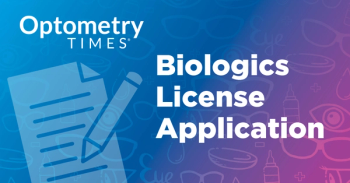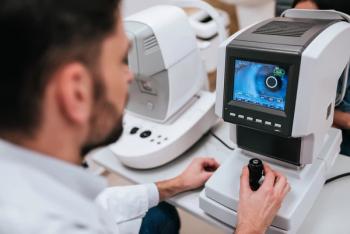
Myopic macular degeneration market analysis estimates significant growth in the next decade
Diagnostic tools, therapeutic innovations such as anti-vascular endothelial growth factor (VEGF) therapies, and supportive technologies to manage vision loss form the myopic macular degeneration market.
A recent market analysis and forecast evaluating the global and regional landscape of the myopic macular degeneration market over the next decade predicts that the market will experience steady growth driven by advancements in treatment technologies, growing awareness of the condition, and efforts to enhance patient outcomes.1 The report, “Myopic Macular Degeneration Market – A Global and Regional Analysis: Focus on Regional Country Analysis: Focus on Regional and Country Analysis – Analysis and Forecast, 2025-2035,” was released in May 2025 and is now available for purchase through ResearchAndMarkets.com, according to a news release.
The market assessed in the report includes diagnostic tools, therapeutic innovations such as anti-vascular endothelial growth factor (VEGF) therapies, and supportive technologies to manage vision loss.1
“The continued focus on early diagnosis, treatment, and managing complications from myopic macular degeneration is crucial in addressing the increasing number of individuals affected by this condition,” the report stated. “Increased awareness, improved health care infrastructure, and enhanced accessibility to treatment options are fueling the growth of this market.”
The report attributed the estimated growth in the market to the rising global incidence of myopia. Research currently indicates that high myopia is the fastest-growing type of myopia and could increase to over 1 billion cases globally by 2050. This then correlates to the rise of myopic macular degeneration cases, according to the report.1
However, anti-VEGF therapies hold significant power in impacting the treatment landscape for myopic macular degeneration, thus fueling the market’s growth. As more anti-VEGF treatments are approved and combination therapies are utilized, the report suggests that treatments will become more accessible and improve patient outcomes. The anti-VEGF therapies work by preventing the growth of abnormal blood vessels in the retina, which is one of the key causes of myopic macular degeneration.1
Challenges projected to impact the myopic macular degeneration market include the high cost of treatments, particularly for patients in developing countries or underserved regions.1 “The high costs of both medication and surgeries related to myopic macular degeneration treatment can limit patient access, which in turn hampers the growth of the market. Health care systems are often challenged to allocate funds for myopic macular degeneration treatments, given the competitive pressures from other conditions that also demand funding,” the report stated.
Companies including Regeneron Pharmaceuticals, F. Hoffmann-La Roche, and Bayer AG were cited in the report as “leading players in the global myopic macular degeneration market” in their investments into research and development in order to develop solutions that cater to market growth. The report also cites the increasing need for specialized care that can aid in the development of new treatment technologies.1
“As the myopic macular degeneration market continues to evolve, emerging trends such as the development of more targeted and personalized therapies, the increasing use of digital health technologies for early detection and monitoring, and the growing focus on prevention and patient education are expected to shape its future landscape,” the report stated. “The rising prevalence of myopic macular degeneration, especially in aging populations and regions with high myopia rates, will fuel demand for more accessible, effective, and affordable treatment options. Additionally, the increasing investment in innovative drug development, development of ophthalmic drug delivery devices, and surgical techniques will present significant growth opportunities for key stakeholders in the coming years.”
Other reports
Last year, DelveInsight’s report titled “Myopic Macular Degeneration Market Insights, Epidemiology, and Market Forecast – 2034” also studied the myopic macular degeneration landscape across the US, Germany, France, Italy, Spain, the UK, and Japan. The analysis anticipated the market growing from about 734 million USD in 2022 to almost 837 million USD by 2034, mostly fueled by anti-VEGF therapies and standard of care. The company found that Japan currently accounts for the highest prevalence of diagnosed myopic macular degeneration cases, with 49% of total cases in the 7 MM in 2022. The US contributes about 27% of diagnosed cases.2
The report cited YESAFILI, OPUVIZ, AHZANTIVE, ENZEEVU, and PAVBLU as key biosimilar players that have the potential to contribute to improved affordability and accessibility of anti-VEGF therapy. Particularly, ENCELTO’s approval by the FDA in March 2025 also “opens the door for potential future gene therapies targeting macular degeneration in myopic patients,” according to the report.2
“Looking ahead, the myopic macular degeneration market faces both challenges and opportunities. While the current pipeline remains limited, increased awareness and extensive research indicate a gradual market expansion. The projected introduction of VABYSMO for mCNV treatment is anticipated to propel the overall market growth, promising a future characterized by more effective management protocols for this vision-threatening condition,” the report stated.2
References:
Myopic Macular Degeneration Market Analysis and Forecast Report 2025-2035 with Regenron Pharmaceuticals, F. Hoffman-La Roche, and Bayer Leading Innovations – ResearchAndMarkets.com. News release. Businesswire. July 21, 2025. Accessed July 28, 2025.
https://www.businesswire.com/news/home/20250721433467/en/Myopic-Macular-Degeneration-Market-Analysis-and-Forecast-Report-2025-2035-with-Regeneron-Pharmaceuticals-F.-Hoffmann-La-Roche-and-Bayer-Leading-Innovations---ResearchAndMarkets.com Myopic macular degeneration market to reach USD 837 million by 2034, driven by high myopia prevalence and anti-VEGF therapies | DelveInsight. News release. ABNewswire. July 24, 2025. Accessed July 28, 2025.
https://www.openpr.com/news/4119286/myopic-macular-degeneration-market-to-reach-usd-837-million
Newsletter
Want more insights like this? Subscribe to Optometry Times and get clinical pearls and practice tips delivered straight to your inbox.










































